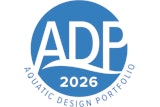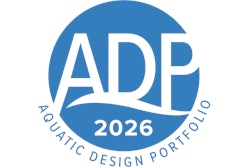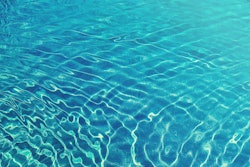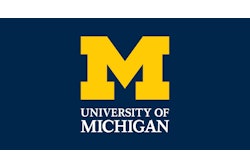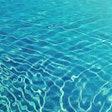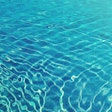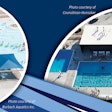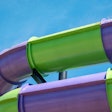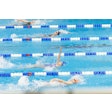A former manager of aquatics for the state of Wisconsin's health department, Tracynda Davis has inspected her fair share of recreational pools, and she knows all too well how pool operators respond to notifications of code violations.
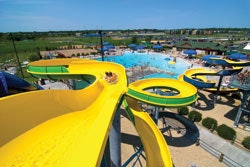 Photo of Apple Valley Family Aquatic Center © Northern Elements Photography, (Courtesy of Bonestroo)
Photo of Apple Valley Family Aquatic Center © Northern Elements Photography, (Courtesy of Bonestroo)A former manager of aquatics for the state of Wisconsin's health department, Tracynda Davis has inspected her fair share of recreational pools, and she knows all too well how pool operators respond to notifications of code violations. Those responses are most colorful when operators perceive that the violations seem arbitrary or have little to do with practical matters related to protecting public safety.
"I could go in and say, 'You're doing this wrong.' They'll say, 'Why can't I do it this way?'" says Davis. "If I come back with, 'Because the code says so,' no pool operator is going to get on that issue."
Davis, representing the National Environmental Health Association and director of environmental health programs for the National Swimming Pool Foundation, is one of scores of volunteers currently helping to develop what's known as the Model Aquatic Health Code (MAHC), which she, for one, believes could help health officials, operators, designers, builders and everyone else in the industry take a more unified and effective approach to preventing waterborne illnesses and drownings at commercial pools throughout the United States. That said, the time is now for those aquatics professionals to weigh in on the specifics of the model code, as most of its individual components are either currently or will soon be involved in a public comment-and-response period.
Those charged with developing the code - which will be offered as a free, national, science-based model to health agencies and any number of other regulatory bodies - say it represents the first effort of its kind in the recreational aquatics industry. According to Davis and others, most current health codes related to aquatics are not sufficient in protecting public health - let alone in standing up to the scrutiny of a court of law - as the industry in recent years has both grown exponentially and evolved to include features such as splash pads and interactive spray toys that have no applicability to outdated safety codes.
"Many states will just have a code from the 1950s or '60s, and they try to modify it every few years when new things emerge," Davis says. "But the majority of those aren't even based on standards. Each state and health department is different."
That was one of the realizations that surfaced five years ago at a workshop presented in Atlanta by the Centers for Disease Control and Prevention. Titled "Recreational Water Illness Prevention at Disinfected Swimming Venues," the workshop yielded some specific practical approaches for swimming pool operators in fighting the spread of illnesses such as cryptosporidium, and yielded some important commentary about the state of the recreational aquatics industry from a range of the industry's most important stakeholders. Soon, the concept of a free model aquatic code took shape.
"There was a recognition at that workshop that there are a lot of inconsistencies among codes in different jurisdictions," says Doug Sackett, a longtime official with the New York State Department of Health who's serving as the director of the MAHC's nine-member steering committee. "The recommendation came out that there be a model code that would reflect best practices, that would be science- and data-driven and that would be available to everyone in the country."
Shortly thereafter, the National Swimming Pool Foundation provided some seed money to the CDC, and the MAHC has been in development ever since. The process was inspired by the U.S. Food and Drug Administration's "Food Code," which has been published every two or four years since its inaugural edition in 1993, and has revolutionized the regulation of the restaurant and grocery industries. (As of 2005, the Association of Food and Drug Officials reported that 48 states, representing 79 percent of the U.S. population, had adopted food codes based on some iteration of the FDA's national model.)
"As with the Food Code, this is not just creating code language - it's not just a matter of what does the code say, but why," Sacket explains, adding that an annex of peer-reviewed scientific research used in crafting the aquatic code will be published to help end users find detailed answers to that very question. "We're adamant that the code has to be supported by scientific data, to the extent possible. In pool codes across the country, even in some of our industry standards, there are criteria we've been using for decades. But when you start drilling down the information and asking where this information came from, there's often no defense for it. It's just, 'This is how we've always done business.'"
Therefore, a large part of the code-creation process - and one of the reasons development has thus far taken so long, according to those involved - has been identifying and quantifying existing research related to recreational aquatic illness and safety. "The question is, 'What do we know?' and that's never really been captured, even in some of the standards we have out there," Davis says. "But when you have a regulation based on sound science, everything makes more sense, and operators are going to be far more willing to adopt and follow those regulations. That's exactly what happened with the national food code."
 Photo of Grapeland Heights Park © Marc Vaughn (Courtesy of Recreational Design & Construction Inc.)
Photo of Grapeland Heights Park © Marc Vaughn (Courtesy of Recreational Design & Construction Inc.)Of course, a major step in finding an acceptable response to aquatics health concerns is clearly identifying the problem. "We have to be able to understand what constitutes a public health issue," says Sackett. "What is it that we're trying to accomplish, and where is the data to support it? Unfortunately, what we're finding in this process - not that we're surprised - is that there are a lot of areas related to recreational aquatics where there is no good data or science."
Thus, each specific area of the code is being given a research grade of A, B or C, depending on the quality and quantity of scientific data supporting the guidelines. "A positive outcome is going to be a research agenda," Sackett says. "We'll be able to see what research we have right now, where there are holes in the research and what might be the best future use of research dollars."
That research is currently being reviewed and cited by members of the MAHC's 12 technical committees, each of which will eventually produce a chapter, or "module," of the model code. The existing foci of those committees are: contamination burden, disinfection and water quality, facility design and construction, facility maintenance and operation, hygiene facilities, lifeguarding/bather supervision, monitoring and testing, operator training, recirculation systems and filtration, regulatory program administration, risk management/safety, and ventilation and air quality.
The membership of each of those committees is geographically diverse, and each comprises a range of professionals within the industry, including health officials, academic researchers, product manufacturers and designers. All committee members signed a code of ethics stating, in effect, that their involvement in the MAHC is purely for the public good and in no way related to promoting a personal agenda or product. Says Davis, "The goal of the code is to create performance-based guidelines, not, 'You need this type of product.'"
Another class of professionals asked to participate in much of the technical committee work has been, importantly, those with significant experience operating recreational swimming pools. "We wanted to involve the people who might actually be using the code," says Davis. "Does this make sense to them? Can they realistically do this or that?"
The very involvement of pool operators is one of the aspects of the MAHC that should differentiate it from legislation such as the Americans With Disabilities Act or the Virginia Graeme Baker Pool and Spa Safety Act in the minds of pool professionals, Davis says. In fact, those involved with the MAHC say there has been a fairly widespread misconception among people in the industry that the MAHC is "just another VGB," as Davis puts it. "The concept is of a model code," she says. "We're not trying to force any legislation onto a state or locality."
Sackett describes the MAHC as "nothing like" VGB or ADA. "Those were both federal laws that were imposed on the aquatics community," he says. "The model code, of course, is a model. In and of itself, it is not a regulation. It can only become a regulation if a local health department or some other authority adopts it. It will be there only for education and hopefully it can lead to some consistency as to how we do business in the aquatics industry."
At this point, MAHC volunteers are all but pleading with recreational aquatics professionals to review drafts of the code and make their voices heard. As of this writing, language of the operator training module has been finalized, but at least five more of the 12 modules were expected to be involved in a 60-day public comment period this month. The remaining six modules will all have public comment opportunities in the future. Anyone can visit the CDC's web site, find modules that are undergoing public review and make any number of comments on the code's contents. According to Davis and Sackett, all comments will be responded to, and all will be taken into consideration during the revision process.
"Because the CDC is a federal agency, the comments have to be posted along with the response," says Davis. "They're not just going into a black box."
Once the chapters of the code are reviewed by the public and the final language is approved, Sackett says the steering committee hopes to implement some sort of revision process that will allow for regular updates and modifications to the code, perhaps on a two-year cycle. But for now, he says, the volunteers are simply trying to get the first version completed. "We're trying to take the work of 12 different committees and put it all together as if it were one voice," Sackett says. "In a perfect world, we would have liked to have had this done much sooner, but there are hundreds of folks throughout the country involved in this process, and they're all dedicating a lot of time and effort to doing this thing right and making sure it's going to be defensible."
Davis suggests the reward for the industry will be worth the wait. "Our hope is that because this is based on science and because we've had so many important players at the table, that once public health officials read these modules, they'll see that this is better than what they currently have," she says. "We hope they'll want to adopt it."













